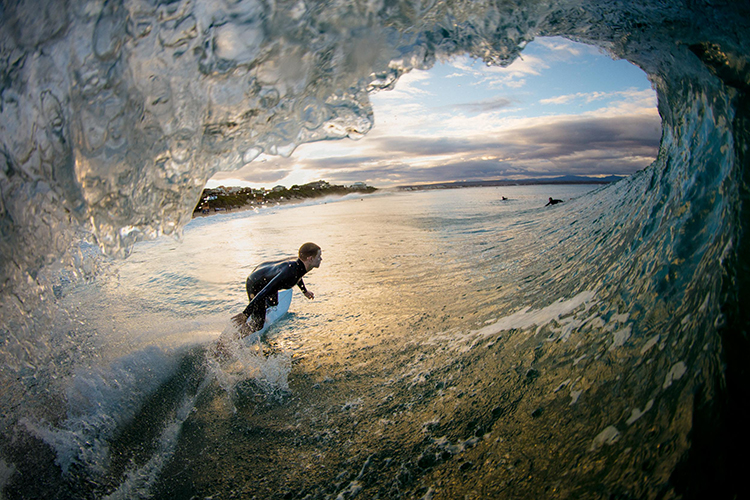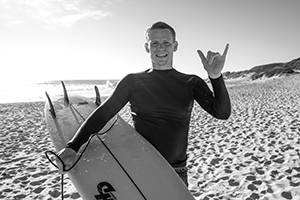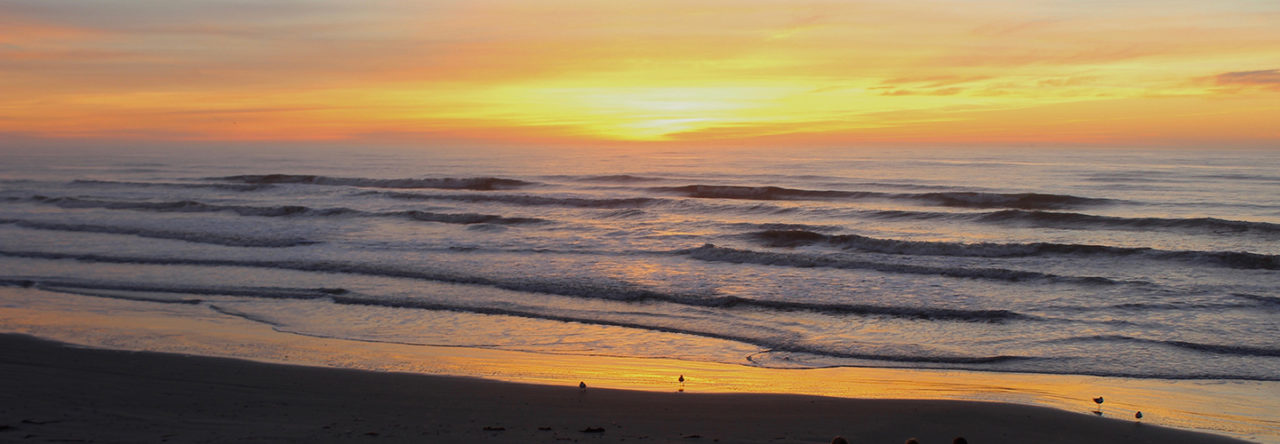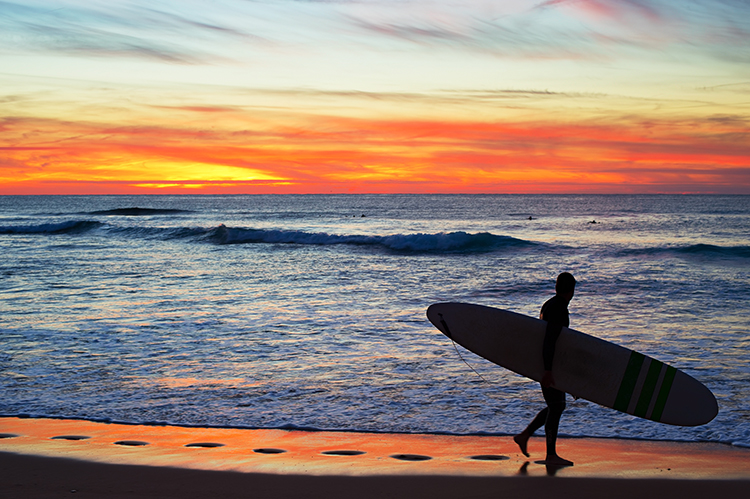Galveston native Milby Shannon chases waves around the globe as part of his job with the World Surf League

Shannon surfing at Jeffreys Bay, South Africa, on Thursday, July 13, 2017. Photo by Sacha Specker. (Instagram @sachaspex)
This column was first published in The Galveston County Daily News on July 22, 2017.
For most surfers, venturing to South Africa and riding the famed right-hand point break at Jeffreys Bay would be a dream come true.
But for Galveston native Milby Shannon, it’s just one stop he’ll make this year as he follows professional surfing’s championship tour around the globe.
Shannon, an associate producer of the live website broadcasts for the World Surf League, travels for 10 months of the year to the most iconic surf locations in the world—including Tahiti, California, Hawaii and Portugal—so that viewers can watch the world’s best surfers competing in the best waves.
On days when the contests are on hold because the waves aren’t optimal at one of these pristine locations, Shannon gets to break away for a surf. Last week, in the days leading up to the South African competition, Jeffreys Bay was doing its thing, reeling with ruler-like precision down the point for hundreds of yards. Shannon was there, snagging a few nuggets with the other WSL crew members who were trying to get wet before the pros took over the lineup.

Shannon in Western Australia, 2017. Photo taken by Dan Shetron (Instagram @stanley_shetron)
Riding waves has been one of the true constants in Shannon’s life. His father, the retired former Frost Bank President Albert Shannon, is a longtime Texas surfer and so is his mother and his three sisters and brother.
“Honestly, I couldn’t tell you when I started surfing in Texas,” he says. “I remember before I could even swim fully, my dad would take me out to the T-head of the Flagship with a lifejacket on and he’d tandem surf with me to the beach. I hated every second of it, and constantly screamed until we were standing up and riding a wave. Then, I would go silent and soak in every moment of the ride.”
Shannon, 27, was a standout in the Texas Gulf Surfing Association when he was a grommet (a younger surfer), and he credits that experience with enabling him to grasp competitive surfing from an early age and to realize the importance of grass-roots event organizers to the sport. Nearly all of the best professional surfers celebrated today had their start in similar organizations and worked their way through the ranks.
Out of all the places Shannon works and surfs each year as part of his WSL duties, he ranks Teahupo’o in Tahiti as his favorite. Because the village of Teahupo’o is so rural, crew members and pro surfers stay with local families year after year and develop deep relationships that make it seem like a home away from home for those on the road.
“Tahiti is an absolutely beautiful location, with lush green mountains jutting into the deep blue Pacific Ocean while also creating amazing world-class waves for surfing,” he says. “Over the two-week competition window (in mid-August), life moves slowly with surfing, fishing and hiking the main pastimes for us when we’re not working. It’s a great bonding experience for the staff members and has produced some of my best memories on the tour.”
While Shannon lives in California when he’s not on the road, Galveston is still considered “home” in many ways.
He says growing up on the island left him with two, indelible lessons in life. The first, whether it’s waves or experiences, you should welcome all challenges as opportunities. And second, everyone you encounter throughout life has led a unique path and each should be individually appreciated.
“Growing up surfing and skating in Texas, I never would have dreamed of this life path,” Shannon says. “The world is truly smaller than it seems, and I’m eternally grateful to those who have coached, mentored and opened doors for me along the way.”
To check out Shannon’s work and see the best surfers in the world compete on the championship tour, visit https://www.worldsurfleague.com.
Boardshorts
Dog-gone winners
The annual Ohana Surf Dog Competition last Sunday attracted 30 entrants, one from as far away as Oceanside, California, said William “Boog” Cram, the man at Ohana Surf & Skate.
The winners from this year’s competition were:
- First place—Deborah Markwardt and Riptide
- Second place—Erin Simmons and Hank
- Third place—Ashley Stringer and Atticus
- Fourth place—Liz Johnson and Emma
Memorial paddle-out
A memorial paddle-out for Larry LeGros, a.k.a. “Wave Hog,” will be held today at 7:30 p.m. at the 37th Street jetty in Galveston.
Save the date
Planning is underway for the annual Endless Summer Galveston Reunion, which will take place on Saturday, Sept. 9, with proceeds benefitting the Galveston Island Beach Patrol. Stay tuned to this column for more information about the event in the coming weeks.
TGSA Grom Roundup
The Texas Gulf Surfing Association will hold its annual Grom Roundups, sponsored by Texas Surf Camps, on Aug. 19 at Galveston Island State Park and Sept. 2 at Horace Caldwell Pier in Port Aransas. Both events start at 8 a.m. The events are open to kids 12 and under and entrants can register for the Roundups through private message on the TGSA’s Facebook page, https://www.facebook.com/texasgulfsurfingassociation/, by providing the competitor’s name and birthdate. The first 36 groms who enter will receive a T-shirt and medal.
If you’ve got a suggestion for a surfing-related topic you’d like to see covered in this column, email Stephen Hadley at stephendhadley@gmail.com.



